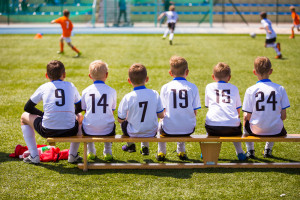
When warmer weather arrives, your kids are antsy to get outside and enjoy the weather. As a parent, stuck in the house with your children all winter, there’s a good chance you strongly encourage their interest in getting more activity. While some kids are content to hop on their bikes and ride to the park, others are eager to sign up for warm weather sports.
Although there are numerous benefits to playing organized sports, such as learning to be part of a team (as winners or losers), how to deal with pressure, and staying healthy, sports (particularly contact sports) can be dangerous.
The Potential Dangers of Youth Sports
Approximately, 30 million U.S. children and teens participate in organized sports each year and more than 3.5 million, under the age of 14, are injured while playing sports. The types of injuries that a child can sustain during sports may include a minor strain or sprain to a more serious traumatic brain injury (TBI). Children under the age of 12 are less likely to receive a TBI from sports, but nearly 19% of children, aged 13-17, receive head injuries while playing sports.
Although your child may be injured at any time during their participation in a sport, warmer weather contact sports are more dangerous and are more likely to result in serious injuries. According to the American Academy of Pediatrics, the most dangerous spring and summer sports for children under the age of 19 include soccer, baseball, and softball. The most recent data released (from 2013) reveals that 171,000 injuries resulted from playing soccer, 106,100 injuries from playing baseball, and 53,300 injuries resulted from participating in softball.
Other warm weather recreational activities that result in injuries include skateboarding, bicycling, playing on the playground, and jumping on a trampoline
How to Help Your Child Play Safe
As a parent, as hard as you may try, you can’t prevent every bump, bruise and scratch from happening, but you can help your child prepare to play safely and responsibly.
- Make sure your child is healthy enough to play the sport by scheduling a pre-participation physical exam (PPE) with your child’s doctor.
- Encourage your child to stretch, get adequate sleep, drink water, and eat well.
- Tell your child to “listen” to his or her body. If he or she needs to take a break, take a break. Have your child tell you if his or her coach does not allow for breaks.
- Make it a rule to wear safety gear whenever playing recreationally, such as skateboarding or bicycling, and always on the field.
- Make sure you know that your child understands what a concussion may feel like so that if he or she hits his or her head, he or she can communicate better with his or her coach.
- Become involved as a volunteer at games or practices. Make sure your child’s coach is CPR and first aid certified and takes concussions and other injuries seriously.
